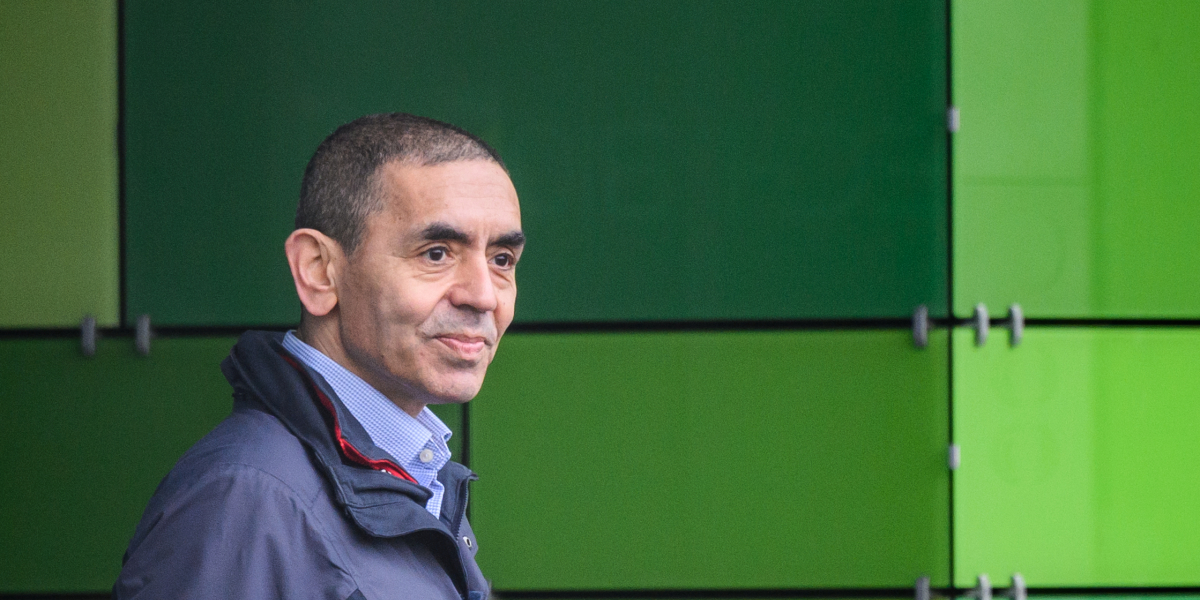Pfizer Inc. partner BioNTech SE is pursuing all its options to make more Covid-19 vaccine doses than the 1.3 billion the companies have promised to produce next year, according to the German firm’s chief executive officer.
The companies will probably know by January or February whether and how many additional doses can be produced, Ugur Sahin said late Monday in an interview. “I am confident that we will be able to increase our network capacity, but we don’t have numbers yet.”
Sahin also said the vaccine will probably work against the new SARS-CoV-2 strain that has emerged in the U.K. Lab tests of the vaccine’s performance have already been done against 20 mutant versions; the same tests will now be run against the new U.K. version, and should take about two weeks, he said.
Efficacy results of more than 90% and approvals around the world have set off a race between countries for additional supplies of the precious shots, with the U.S. seeking to exercise an option for a hundred million. Most of the doses anticipated for next year — enough to immunize 650 million people — have already been spoken for.
More than 2 million people in six countries have already gotten their first shot of the standard two-dose regimen, according to data collected by Bloomberg.
BioNTech is seeking more of the raw materials it needs for its mRNA vaccine, more clean rooms and more cooperation partners, Sahin said. The company also needs additional space to formulate the shots, put them into containers and prepare them for shipping, he said. Pfizer is producing vaccine at three sites in the U.S. and one in Europe, while BioNTech has two manufacturing sites in Germany.
The vaccine’s EU approval and an inoculation campaign set to start there on Dec. 27 promise to further draw on stocks. By the end of 2020, BioNTech expects to ship 12.5 million doses to the EU and 20 million to the U.S., the company said in a press conference on Tuesday. The partners have already begun shipping shots to the U.K., where Health Secretary Matt Hancock on Monday tweeted that some 500,000 people had gotten their first dose.
New Strain Tests
If the vaccine turns out to be ineffective against the mutant strain circulating in the U.K., BioNTech could, in theory, produce a new Covid vaccine to fight the variant within six weeks, Sahin said at the Tuesday briefing. How fast the new inoculation could get to patients would depend on the speed of regulatory review.
But so far, Sahin sees no reason to doubt that the existing shot will be effective. Most vaccines target the spike protein, which allows the virus to enter cells.
“This virus has multiple mutations, but as far as we know, 99% of the spike protein is not mutated,” he said late Monday. “Let’s do the experiment and get the result. That’s always the best answer, but I would emphasize just to stay calm.”
–With assistance from Riley Griffin and Iain Rogers.
More health care and Big Pharma coverage from Fortune:
- The COVID-19 vaccine rollout is dangerously flawed. Science and data could fix it
- How hackers could undermine a successful vaccine rollout
- “There simply isn’t the trust”: The fight to overcome vaccine skepticism in the Black community
- You can now get personalized updates on the COVID vaccine from Zocdoc
- Here’s how much Europe will pay for each COVID-19 vaccine

